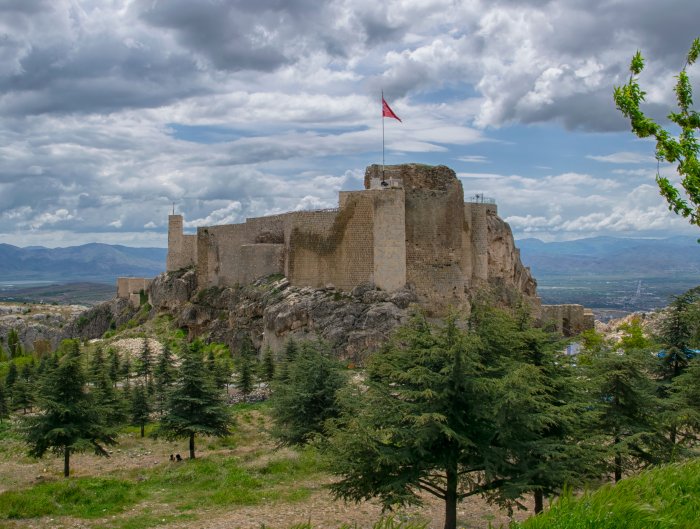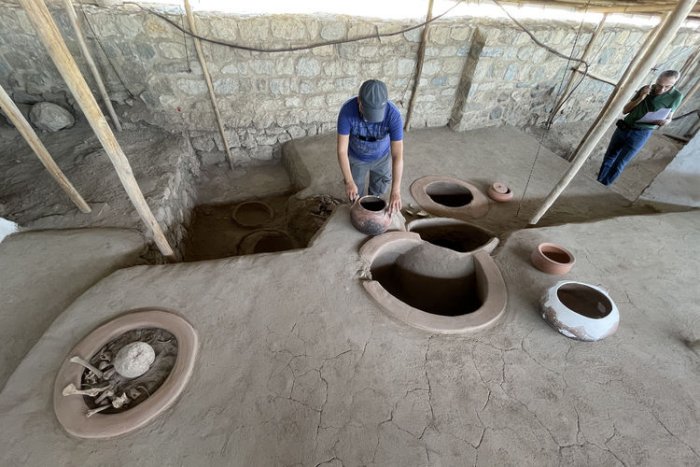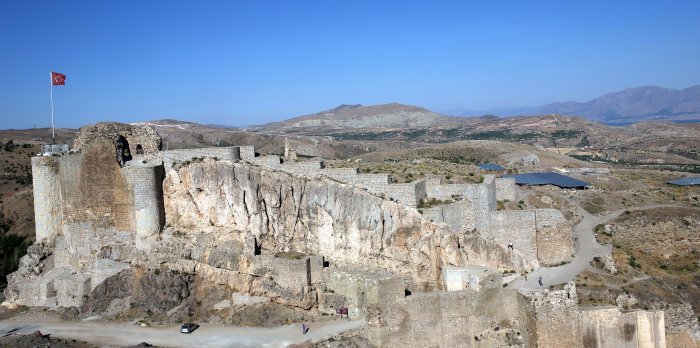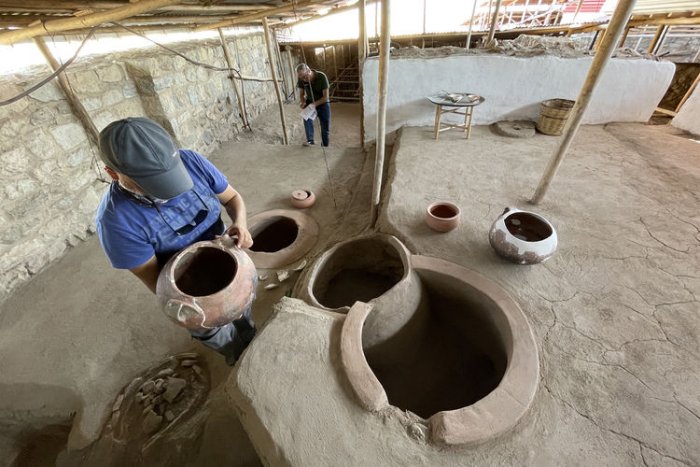Conny Waters – AncientPages.com – The magnificent Harput Castle, also known as the Milk Castle, was built by the Urartu Kingdom in the 8th century B.C.
The lost kingdom of Urartu is shrouded in mystery because very little is known about this ancient place and the origin of its people. Archaeological discoveries reveal “Urartu was situated near Lake Van and the mountainous plateau between Anatolia, Mesopotamia, the Iranian Plateau, and the Caucasus Mountains before it was destroyed. The earliest documents mention the land of Urartu, which can be found in ᴀssyrian sources. This Iron Age kingdom was established around the mid-ninth century BC and conquered by the ancient Iranian people of Medes in the early 6th century BC.

The Harput Castle. Credit: Adobe Stock – serhatbozkurt
Based on what we know, the people of Urartu were famous metalworkers and spoke a language related to Hurrian (a language with no other known connections).” 1
One of the ancient buildings that provide some historical information about the enigmatic kingdom of Urartu, and many other intriguing ancient civilizations is the Harput Castle, where the traces of the first settlements date back to 3000 B.C.
Located in Elazig, Turkey, the Harput Castle continues to be the focus of intense archaeological research. Scientists found traces of the first settlements dating back to 3000 B.C. As a silent witness, the Harput Castle has seen many powerful ancient civilizations appear and disappear.
Between the 4th century BC and the 11th century AD, the castle was under Armenian, Roman, Sᴀssanid, Eastern Roman, Abbasid, and again Eastern Roman rule until the end of the 11th century.
An old legend tells a scarcity of water and an abundance of milk during its construction meant that milk was added to the castle’s mortar, leading to it being sometimes called “Milk Castle.
Whether this is true or not cannot be said right now, but excavations at the castle result in fascinating finds.

A 1,000-year-old kitchen was found at the Harput Castle. Image credit: AA
This time, archaeologists unearthed a 1,000-year-old kitchen where food and bread were prepared for the castle managers and statesmen. The kitchen was found in the part of the castle called Sarayönü, which is on the UNESCO World Heritage Tentative List.
The archaeology team found eight tandoors, glazed serving plates, pots, and a catapult ball at the site.
Harput Castle Excavation Head Prof. Dr. Aytaç told Anadolu Agency (AA) that the kitchen was most likely used until the 1860s when the castle was abandoned.
Inside one of the tandoors, a large urn-shaped oven was a cannonball. How it got, there can not be said with certainty, but it’s possible “the cannonball could be the catapult cannonball that the 13th century historian İbni Bibi mentioned in the Persian Concise Seljukname.
According to Bibi’s account, a cannonball was thrown by the soldiers during the siege of the castle by the Seljuk Sultan Alaaddin Keykubad in 1234. The cannonball fell into the kitchen of the palace and overthrew the lamb cooked in the tandoor.
“According to what is written in Ibn Bibi’s work, in 1234 AD, the ruler of Harput, Nurettin Artuk Shah, invited the Ayyubid rulers to protect himself, and Alaaddin Keykubad besieged the castle that year.

Harput Castle. Credit: Adobe Stock – Cenk
He placed 18 catapults around the castle and started firing at the castle with stone cannonballs. According to Ibn Bibi’s narration, one of these stone cannonballs fell in the middle of the tandoor in which a lamb was cooked, and this event caused fear in the castle.

The ancient kitchen inside the castle is being investigated. Image credit: AA
In his paper, Ibn Bibi says, ‘After this incident, the kings and Nurettin Artuk Shah were very afraid, he hesitated and surrendered the castle.’ A catapult ball appeared in the middle of one of the tandoori we found, which is in line with the story told by Ibn Bibi, Professor Aytaç told the Anadolu Agency.
See also: More Archaeology News
Putting the cannonball aside, one must also mention scientists examining the kitchen’s lower layers have reason to suspect it may be older than 1,000 years. This is, without doubt, a fascinating discovery, adding more value to the cultural heritage of the Harput Castle.
Written by Conny Waters – AncientPages.com Staff Writer
Expand for references
- A. Sutherland – Mysterious Lost Kingdom Of Urartu And Its Enigmatic History, AncientPages.com





